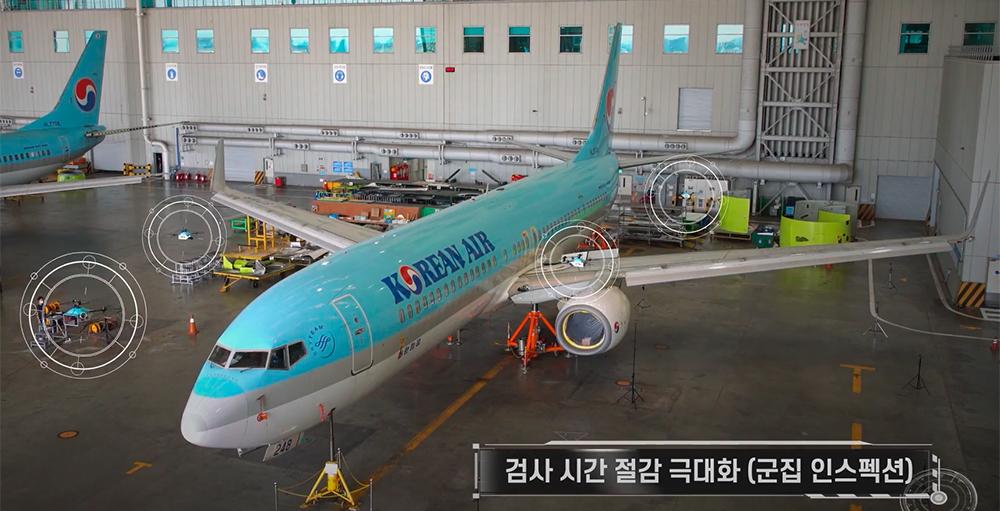
Korean Air is making progress on its novel approach to drone-based aircraft inspections, which uses a swarm of drones to further reduce inspection time and ensure complete coverage even if one drone malfunctions. Since demonstrating the drone swarms in late 2021, the airline has refined the technology and received government support to further development.
The airline’s drone swarm approach uses the latest drone enhancements, such as pre-set inspection plans, geofencing to keep drones in restricted areas, a collision avoidance system and artificial intelligence (AI). The drones are made locally by a Korean manufacturer. AI will enable the drones to detect various defects such as dents and cracks.
The inspections are expected to partially replace the manual inspections regulations require at fixed intervals or whenever anomalies are found in pilot flight logs that indicate possible damage to airframes. However, the drones will not entirely replace manual inspections. They will be looking only at the top parts of the fuselage, wings and tail sections—the parts of the aircraft that are difficult, risky or time-consuming for mechanics to inspect.
Korean Air has already tested the drone swarms on dozens of Boeing 737s. According to a spokesperson for the airline, “we have made some adjustments, such as the distance between the drone and the aircraft and the duration of the drone inspection.”
The project is now looking promising enough to receive government support. The airline was recently awarded maintenance research and development assistance by the Korean government.
A spokesperson for the airline says it has already developed most of the technology needed for the drone swarms, but it still needs to collect extensive inspection data of possible errors for AI diagnosis. Managers plan to secure this data from Korean Air’s maintenance sites.
Once supported by this real-world data, AI is expected to minimize both inspection time and human error through an automatic defect detection function, which should eliminate the need for a human inspector.
The drones will conduct inspections according to pre-set flight plans, so a drone operator will not typically be required. However, the airline’s spokesperson adds: “Field staff who can operate the drone will need to be present in the case of any unexpected situation.”
Geofencing can confine drones to hangars if regulators require this, but Korean Air’s plan is to use drones on aprons if permitted.
The airline envisions using the swarms for its own 737s first, but it hopes to eventually extend the technique to other aircraft and offer it to other carriers.
Korean Air is still seeking regulatory approval for the technology. In line with these efforts, it says Korea’s Ministry of Land, Infrastructure and Transport has been working to revise its inspection regulations. A spokesperson for the airline says it is difficult to predict the timeline for regulatory approval.





